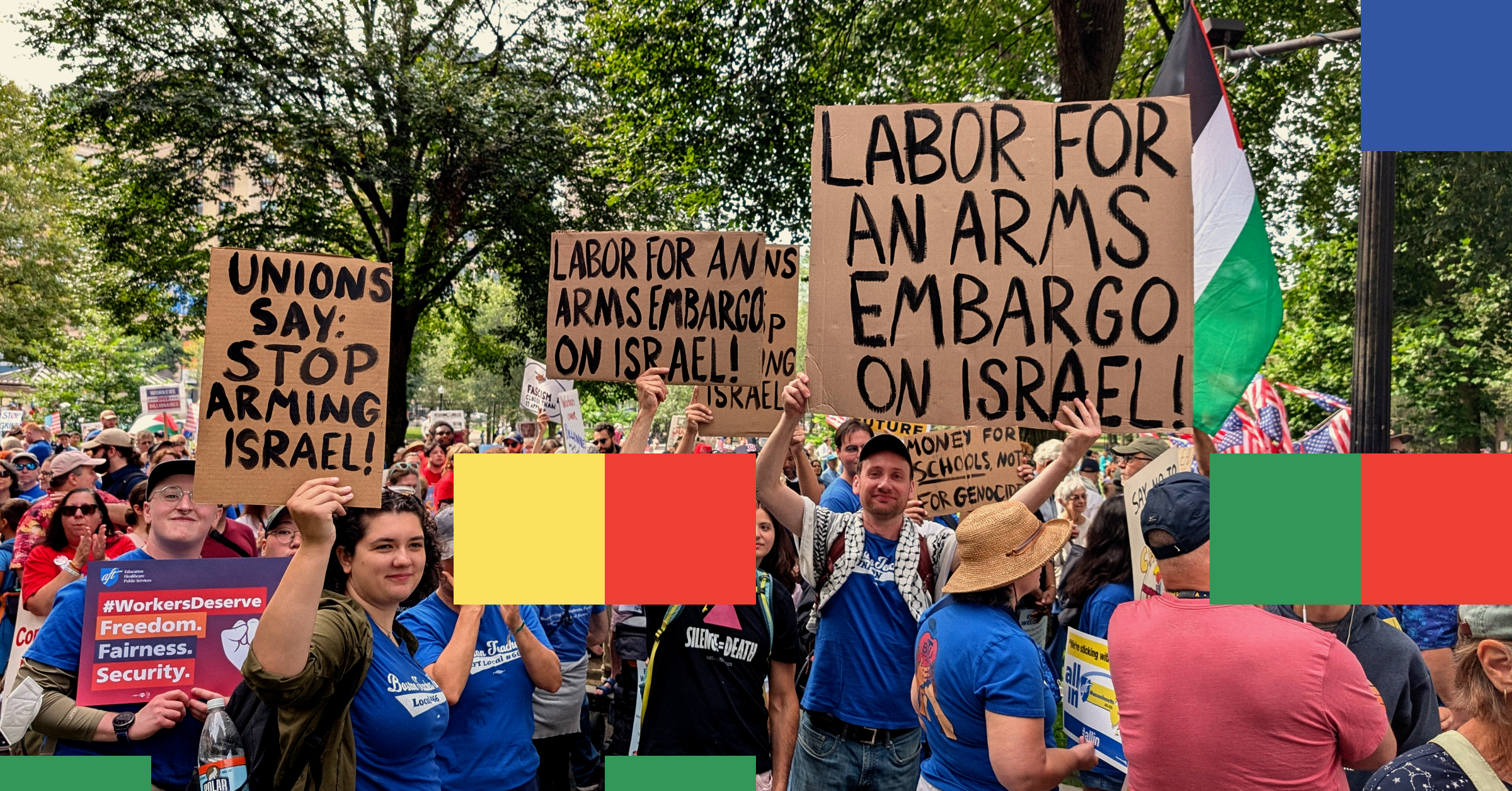The Chicago Teachers Union (CTU) contract, covering almost 30,000 teachers, nurses, and other educators, expired on June 30. For the first time in its history, CTU is bargaining with a mayor who is a former CTU member and organizer, and whom the union invested significant resources in helping to elect. Bargaining is still in early stages, but one thing is clear: the election of Brandon Johnson has changed the calculus of the CTU’s strategy.
CTU has not yet flexed its full strength. Though we now have electoral connections to the mayor, we know from CTU’s 2012 and 2019 militant contract campaigns, which culminated in strikes, that the strongest power comes from our members.
In member email updates and to the public, the CTU is highlighting a few key demands, including renovated “green” school facilities, fully funded special education programs, support for English Language Learners, a librarian in every school, more social/emotional supports for students, housing justice, and more prep time for elementary teachers. CTU has posted our full proposals (142 pages) at a member-only link, though they were leaked early on by the right-wing Illinois Policy Institute.
The CTU proposals were generated largely by member committees (such as the Housing Committee, Arts Committee, Human Rights Committee, and Climate Justice Committee), although individual members could submit suggestions as well. The whole proposal package was debated and passed at a House of Delegates meeting prior to bargaining kickoff in late April. The school system (CPS) has also posted its proposals (28 pages) publicly, including “streamlining the grievance process, mitigating the disruptive effects of mid-year teacher transfers on schools, ensuring uniformity across schools in assessment and grading responsibilities, and establishing baseline expectations for teachers and related service providers before, during, and after IEP [Individualized Education Program] meetings.”
Context
The context of this bargaining is important. Mayor Brandon Johnson, who recently finished his first year in office, is a former teacher, CTU member, and staff organizer, and CTU threw its whole weight into getting him elected, including money, staff time, and member door-knocking. CTU says that while past contract campaigns have been battles, this year our contract proposals align with the mayor’s own goals as stated in his transition report, so the key will be to work with the city to say “how might we do this together?” and the question we have to organize around (largely at the state level) is “how will we fund this?” In June, CTU President Stacy Davis Gates said, “The voice that you don’t hear from the CTU is one that is confrontational because we don’t have a mayor being confrontational with us. In fact, we have the opposite. We have a mayor who’s encouraged both sides to work together to foment this transformation.”
During summer bargaining, as CPS claimed that it has no money to fund our proposals and made very few serious counterproposals, CTU’s tone started to change. Gates pointed out that for far too long, CPS and the state have been satisfied with a “good enough” education for our students, but, she said, we will no longer stand for that status quo.
Another new context is the first-ever Chicago Board of Education elections, taking place in November. Ten board members will be elected and CTU is knocking doors for our endorsed candidates; 11 will be appointed by Johnson. New members will be seated in January. Depending how long bargaining lasts, this election could be an important factor. The Board of Education recently voted to approve CPS CEO Pedro Martinez’s 2025 budget, and CPS is now claiming that it cannot fully staff schools or meet almost any of CTU’s contract proposals because of a budget crisis. This is one example of the type of vote that CTU and other Chicagoans will have more leverage over with an elected school board.
Finally, in terms of political context, it is important to note that the CORE caucus (Caucus of Rank and File Educators) is still in power in the union. Gates and Vice President Jackson Potter are both CORE members. CORE is generally considered the left-leaning caucus, founded on principles of “member-driven unionism, transparency & accountability, equitable high quality education for all students, defense of publicly funded public education, a strong contract, and anti-racism.” CORE has certainly evolved and changed since its founding in 2008 and coming to power in 2010. We can look at the contract proposals, bargaining strategy, and contract campaign to get a sense of CORE’s priorities and strategies. Generally, CORE members have followed the lead of the elected officers.
Bargaining
The bargaining strategy and contract campaign are decided by the officers, perhaps with input from union staff members. Some union committees have also taken it upon themselves to organize informational events about their specific proposals. After the first day of bargaining and a brief press conference, the bargaining team went on a “trolley tour” around downtown “to invite business, city, state and civic leaders to join [the] campaign,” including “White Sox/Bulls owner Jerry Reinsdorf, the Building Owners and Management Association, the Civic Committee of the Commercial Club of Chicago/Kids First, Governor JB Pritzker, and the Illinois State Board of Education.” CTU also hosted an event with Grassroots Collaborative to bring representatives from 20 community organizations to discuss our contract proposals.
Throughout bargaining, members have received weekly updates from CTU and several from CPS as well. CTU’s updates have included quotes from bargaining team members, explanations of our proposals and why they’re important, and sometimes a note about upcoming bargaining session dates and topics. So far, 5 tentative agreements have been communicated, including principal training on the contract, gender affirming healthcare, and agreements around AI.
Our bargaining team is made up of an “expanded table” of approximately 60 people, consisting of executive board members and rank-and-file committee chairs. CTU and CPS have set up 12 subcommittees to bargain over different elements of the contract (such as clinicians, bilingual education, green schools, housing justice, and class size). Bargaining has been closed to members not on the bargaining team.
The exception is the four (with potentially two more) bargaining sessions open not just to members but to the general public. The first was held June 14 in a school gym, to negotiate over “Healthy, Safe, Green Schools.” About 150 people attended in person and 1,800 watched the livestream. The session opened with remarks from Gates, the CPS COO, and members of community environmental justice groups. Each side then made presentations, followed by two questions. After a five-minute caucus both sides answered two pre-submitted audience questions, and then had 10 minutes to respond to the other’s presentations.
The audience responded favorably to CTU’s presentation and largely negatively to CPS’s (for example, laughter broke out when CPS described school lunches as “a unique dining experience”). CTU and CPS agreed that we should be working together to secure more grants for green and healthy school infrastructure, and that this is a historic opportunity for CTU to be collaborating with the city.
The other public bargaining sessions have followed the same agenda. CPS’s presentations paint a picture of already-perfect schools; they are not bargaining proposals. Gates pointed out at the last public bargaining session that most things that CPS is claiming makes its schools great are things that the union has won through strikes, and at the post-bargaining press conference she said “there’s got to be somewhere between playing nice and going on strike that give us the schools Chicago children deserve.” This further marks a shift in CTU’s tone.
Public bargaining is being treated more like an extended press conference than like true negotiating. Unfortunately, it was decided in ground rules that no tentative agreements would be reached during public bargaining. In fact, when the president of the Minneapolis Federation of Teachers, Marcia Howard, spoke at public bargaining, she said that she had never been at open bargaining like this, where the format was a presentation and that no TAs could be reached. CTU has said that it was quite difficult to get CPS to agree to even six public bargaining sessions, even with tightly managed agendas. As bargaining continues and CPS proves uncooperative, the $400 million budget deficit is taking center stage. CTU is demanding that CPS work with us to demand more money from the state to fully fund our schools, to go after banks that gave CPS predatory loans in the past, and to support legislative initiatives such as taxing the rich and corporations.
Campaign
Thus far, the union’s major asks of members have been:
- Lobby Day in the state capital May 15, when CPS released one CTU member from each school to lobby for fully funded schools.
- Signing a Contract Commitment Petition to “show our solidarity behind our contract proposals, our fight for funding & the elected school board races in November.”
- Attending the public bargaining sessions.
- Attending a “regional contract meeting,” held in different areas of the city. These were advertised as “staff want to provide you information about our contract fight this year,” as well as “hear from you about the issues you face in your classrooms and work spaces, about ways we can unite to better enforce your rights, and about your priorities as we negotiate a transformative contract.”
- Speak at Board of Ed meetings.
- Talk to parents and community members about our contract.
- Schedule a back-to-school union meeting for your colleagues for the first weeks of school.
- Document staffing shortages as schools reopen.
- Wear your CTU red Friday, Aug. 30, and take a solidarity photo in CTU red.
The union’s message to the school-based Contract Action Teams (or CAT teams) has been to “stay ready.” CAT teams are a way for members in a school to be divided into groups of about 10, with a CAT team leader responsible for talking to each member of the team ahead of actions and throughout the campaign. In the new school year, CAT teams could organize for more public bargaining sessions and for real open bargaining so that CPS cannot present a good face to the public and then say “no” in the privacy of closed-door meetings.
We could also be organizing for structure tests and actions that any member could join: sticker days, red shirt days, social media campaigns, rallies, op-eds, contract campaign and bargaining update presentations for school-based union meetings, canvassing CPS families, and more. The CTU has successfully executed these strategies in the past, and under a friendly mayor, we could use the opportunity to be even bolder and more creative, and most important, to organize members to use their own power.




